2015 Yamaha FZR Review
Aggressive, agile performance model sheds a few pounds
The ratio between a craft’s horsepower and its weight is of utmost important in the performance segment of the personal watercraft market. That’s why Yamaha deemed it worthwhile to tinker with a proven winner – the FZR – and see if they couldn’t make that ratio just a little bit better for 2015.
The craft’s weight loss, plus the welcome tweaks of just one year ago, make for one of the most thrilling craft of 2015.
Slim Fast
The weight loss comes courtesy of the latest generation of Yamaha’s NanoXcel hull technology, dubbed appropriately NanoXcel 2. The original Nano changed the filler material in Sheet Molding Compound (SMC) from calcium carbonate to exfoliated clay to lighten the end result, while retaining all the necessary strength. Nano2 combines that nano-engineered clay with glass micro-bubbles to develop a stronger resin that, again, uses less material. These micro-bubbles are smaller and stronger than other filler materials, and ultimately trim a substantial 35 pounds from the FZR’s hull, liner, and deck.
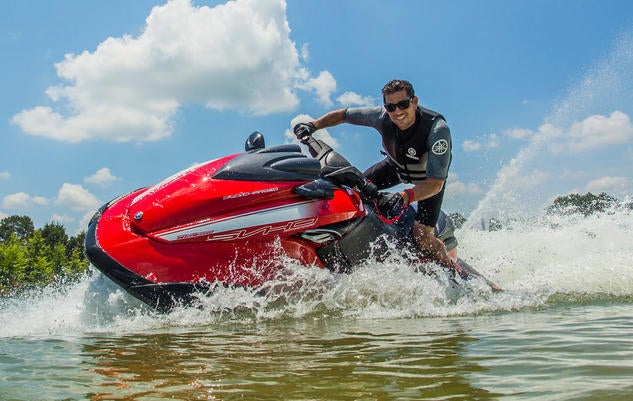 Yamaha managed to shave 35 pounds off the FZR for 2015.
Yamaha managed to shave 35 pounds off the FZR for 2015.It’s a significant savings that the FZR’s Super Vortex High Output (SVHO) engine takes advantage of. Introduced last year, the SVHO offers significantly more horsepower than the SHO it replaced. While both feature 1.8-liters of displacement, the SVHO features both a larger supercharger and larger, more efficient intercooler. It also adds compression-forged pistons, a more efficient oil cooler, and larger injectors.
2014 Sea-Doo RXP-X 260 vs. Yamaha FZR
Yamaha delivers that increased power through a larger 160mm, eight-vane pump, with a larger, 85mm exit diameter. And in a big change last year, that pump is now loaded via a scoop-style intake grate. An extended ride plate and longer sponsons positioned further aft sharpen and improve the boat’s handling.
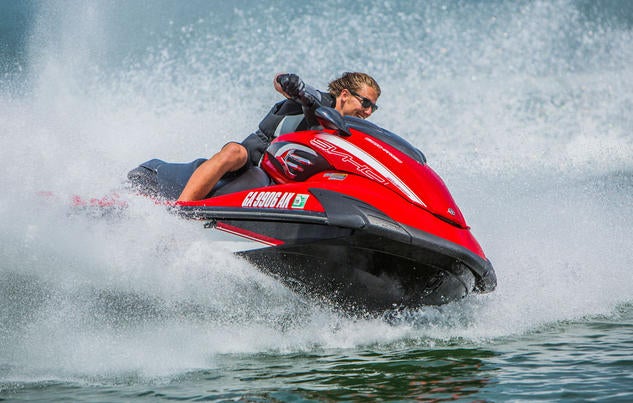 Thanks to an extended ride plate and longer sponsons introduced last year, the FZR is sharper handling than ever.
Thanks to an extended ride plate and longer sponsons introduced last year, the FZR is sharper handling than ever.E-Ticket Ride
Walt Disney used to sell theme park tickets by letters, from A-E, with A being a simple tame attraction and E being the best, most thrilling the park had to offer. In that frame of reference, the FZR is definitely the proverbial “E-Ticket ride.” The engine, pump, and sponson changes made the FZR brutally quick and responsive in 2014. The lighter weight only improves upon all of the above for 2015.
Trim the bow down via the manual twist lever on the portside grip (sorry, no electric trim upgrade for the FZR in 2015 to keep that weight down) and squeeze the throttle – hard – and the FZR accelerates with simply awesome force, reaching 30 mph in a scant 1.5 seconds. It’s a rush, no doubt, and very possibly the best acceleration currently found in the market. Be prepared, and keep your weight forward and over the bow if you don’t want to find yourself not joining along for the ride. In good water conditions and with a relatively light load of passengers and fuel, that acceleration will continue all the way up to about 67 mph. Maybe even more.
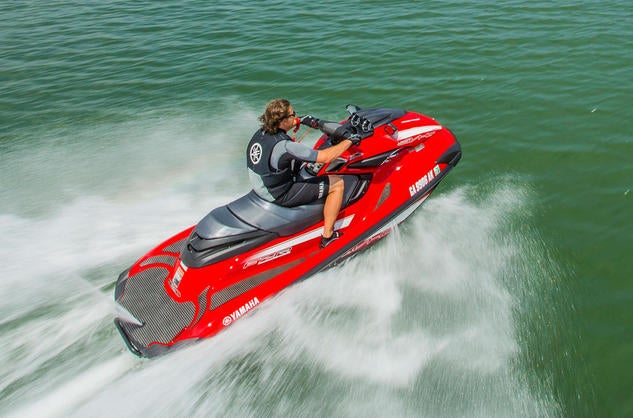 With the ability to go from 0 to 30 mph in 1.5 seconds, you’ll want to hang on tight before squeezing the throttle on the Yamaha FZR.
With the ability to go from 0 to 30 mph in 1.5 seconds, you’ll want to hang on tight before squeezing the throttle on the Yamaha FZR.So how does the boat handle all that power in the turns? As I said last year, very, very well, but again, only if you’re prepared.
COMPARISON: Read our review of the 2014 Kawasaki Jet Ski Ultra 310X
Shifting the sponsons slightly back really quickened the FZR’s response, enabling it to power through turns similar to Sea-Doo’s RXP-X 260. Translation? It snaps them off like a race boat if pushed, putting up a wall of water and not losing its grip for a second. As I said last year, however, the catch is you have to be able to hang on. Sure, the average rider can have thrills for hours on the boat, but if you really want to discover its potential you better start working out. Hard cornering puts significant strain on the muscles.
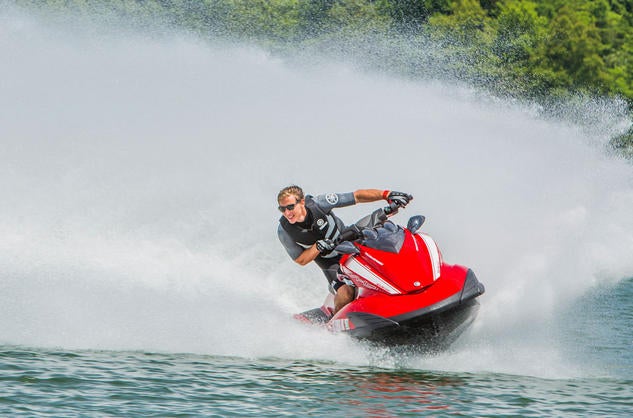 The FZR will keep you smiling for years to come.
The FZR will keep you smiling for years to come.Hanging on, however, is made somewhat easier by the craft’s rounded chines. They enable the driver to intuitively roll the boat into a corner with an inside lean. The aggressively shaped, bolstered seat also comes in handy, wrapping behind the driver’s butt to help anchor it into position during intense maneuvers.
COMPARISON: Read our review of the 2015 Sea-Doo RXP-X 260
Still, this is a race-ready machine, so be prepared for the ride.
All Muscle
While the power, weight, and handling are clearly the story for 2015, other FZR standards remain, including the telescopic steering column. Featuring three positions, it extends to make standing more comfortable, and lowers to make the craft feel even more aggressive. Try the latter to get the best ride in calm water, and the former to take some of the back-bending posture out of standing when trying to absorb a choppy sea.
Like all Yamahas, the craft also features the remote security system to lock out the ignition or govern the power output. One possibly overlooked new feature is the carbon-fiber texture on the dash visor. It just further adds to that aftermarket look on a boat that already competes with higher-dollar, aftermarket offerings.
That’s why on the FZR, the extras will probably always be secondary to the extra-exciting performance. The FZR is now, more than ever, truly a hardcore musclecraft…and trust me, oh so worthy of the title.
| 2015 Yamaha FZR Specs | |
| Length | 132.7 inches |
| Beam | 48.4 inches |
| Curb Weight | 791 lbs |
| Engine | Four-cylinder, four-stroke, supercharged/intercooled |
| Displacement | 1,812 cc |
| Bore and Stroke | 86mm x 78mm |
| Compression Ratio | 8.6:1 |
| Rated Horsepower | N/A |
| Fuel Capacity | 18.5 gal. |
| Combined Stowage Capacity | 21.3 gal. |
| Colors | Torch Red Metallic |
| Price | $14,699 |
Get PersonalWatercraft.com in your Inbox!
Like PersonalWatercraft.com on Facebook
Comments
Most Popular
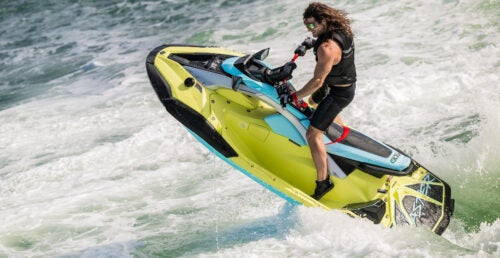
2025 Yamaha JetBlaster PRO 2-Up Review
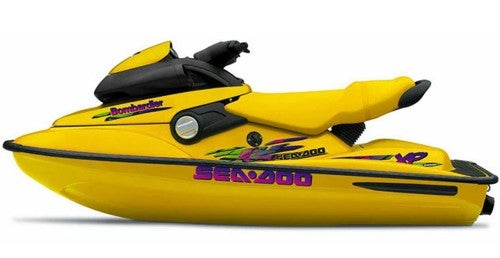
Remembering the Sea-Doo XP
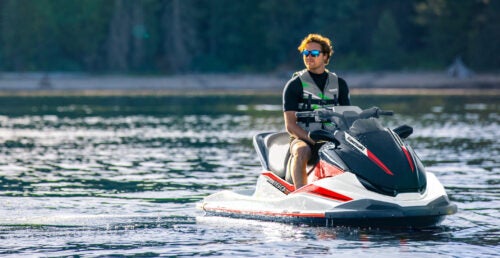
2024 Kawasaki Jet Ski STX 160X Review
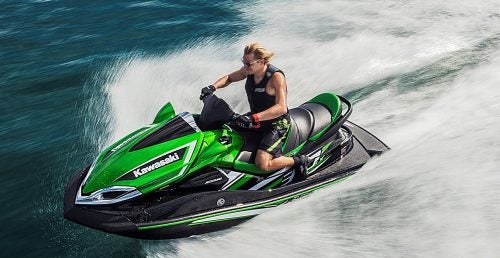
2017 Kawasaki Jet Ski Ultra 310LX Review

Whatever Happened to the Wetbike?
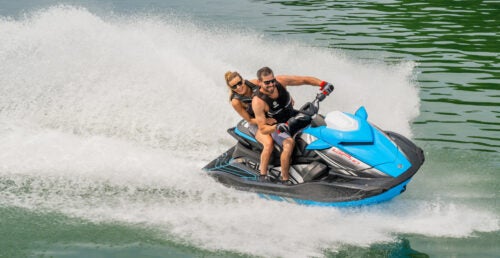



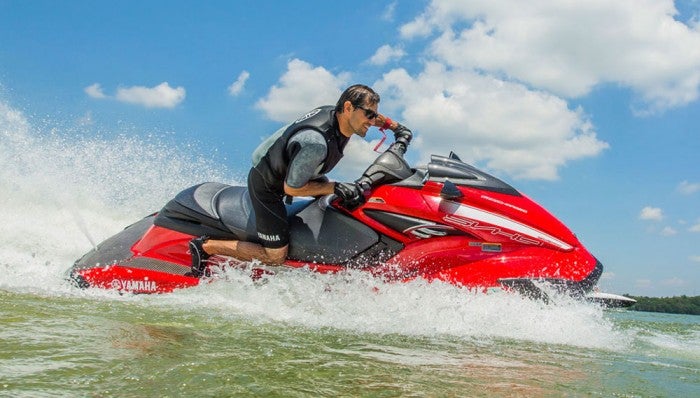
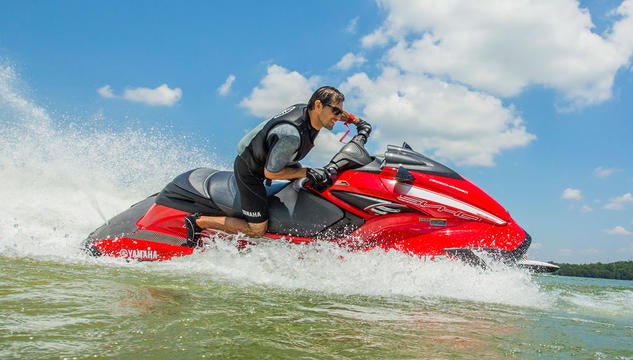



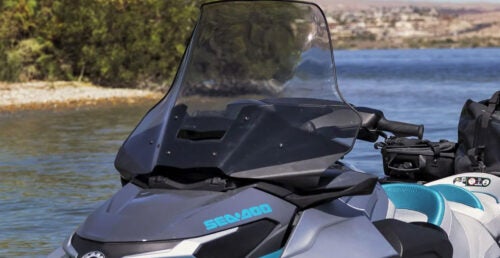
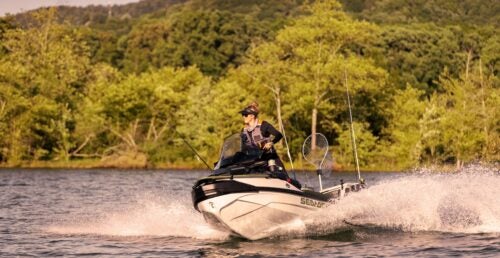


 Your Privacy Choices
Your Privacy Choices